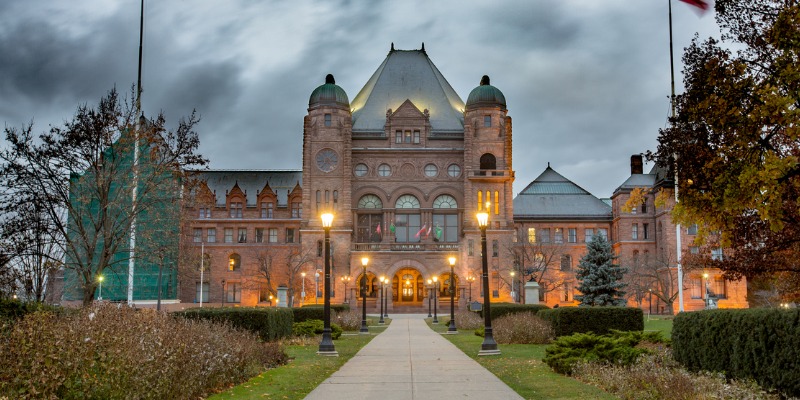Ontario faces major fiscal challenges beyond massive budget deficit

This week, the Ford government will table its budget for the 2020/21 fiscal year. Much attention will (deservedly) focus on the provincial budget deficit, which this year will almost certainly be the largest one in decades. The last fiscal update showed a deficit of $38.5 billion for this year. As a share of provincial GDP (a good way to measure the size of a deficit), that’s bigger than in any year in the 1990s or the difficult years following the 2008/09 recession.
The government will say this massive deficit is mostly attributable to the COVID-19 recession and the government’s response to it. And this is entirely reasonable.
However, it should not distract Ontarians from the fact that the province was already facing serious fiscal challenges before the pandemic hit, which will be waiting for us on the other side of this crisis.
Let’s look at a few pieces of data to help understand the scale of the fiscal challenges facing Ontario. Last year, Ontario ran a budget deficit of $9.2 billion—the province’s 12th consecutive deficit. Net debt (all debt minus financial assets) reached $355 billion at the end of last year. That’s almost 40 per cent of provincial GDP—again, more than in the 1990s.
Perhaps more worrying than the current state of provincial finances is their pre-COVID trajectory. At present, Ontario’s finances are not sustainable. Technically, this means that under current policy and using reasonable assumptions, the provincial debt-to-GDP ratio will continue to increase in the years ahead, putting additional pressure on government finances and potentially the performance of the overall economy.
One recent estimate suggests that using reasonable assumptions, if Ontario wants to achieve sustainability without economically damaging tax increases, it must reduce annual government spending by approximately 3 per cent of GDP over time. That’s a fiscal adjustment of approximately $26.1 billion.
Government program spending (all operating spending except for debt interest) in 2019/20 was $153 billion. So for context, to achieve fiscal sustainability without higher taxes, in a single year, the government would need to reduce program spending by approximately 17 per cent. (The government is unlikely to attempt to achieve sustainability in any single year, but this figure gives a sense of the scale of the challenge ahead.)
Again, this week we’ll likely hear reassuring words about this year’s provincial budget deficit—that its size was caused by emergency circumstances and it will shrink quickly as emergency spending winds down. Even though this may be true, Ontarians should understand the reality of the province’s long-term fiscal challenges, which were with us before the pandemic hit and will be waiting for us once the crisis subsides.
Author:
Subscribe to the Fraser Institute
Get the latest news from the Fraser Institute on the latest research studies, news and events.

